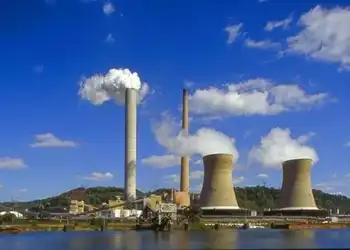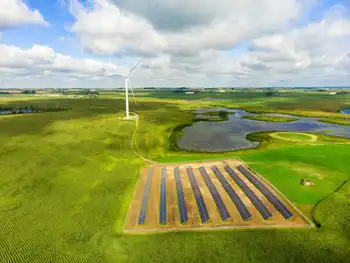Fuel storage, safety had vexed stricken plant
The Fukushima plant that has spun into partial meltdown and spewed out plumes of radiation had become a growing depot for spent fuel in a way the American engineers who designed the reactors 50 years earlier had never envisioned, according to company documents and outside experts.
At the time of the March 11 earthquake, the reactor buildings at Fukushima held the equivalent of almost six years of the highly radioactive uranium fuel rods produced by the plant, according to a presentation by Tokyo Electric Power Co to a conference organized by the International Atomic Energy Agency.
Along with questions about whether Tokyo Electric officials waited too long to pump sea water into the plants and abandon hope of saving them, the utility and regulators are certain to face scrutiny on the fateful decision to store most of the plant's spent fuel rods inside the reactor buildings rather than invest in other potentially safer storage options.
That debate has direct implications for nuclear policy in the United States about whether changes enacted after the September 11, 2001 attacks go far enough to protect potentially vulnerable fuel stored at the nearly two dozen U.S. power plants that have the same design as the Fukushima Daiichi plant, experts say.
In Japan, the crisis has also focused attention on Tokyo Electric's spotty record on safety issues that continued until days before the quake, its cost-cutting drive under current chief executive Masataka Shimizu, and a relationship with Japanese government regulators that critics say remains shot through with conflicts of interest.
The cascade of safety-related failures at the Fukushima plant is already strengthening the hand of reformers who argue that Japan's nuclear power industry will have to see sweeping changes from the top.
"I've long thought that the whole system is crap," said Taro Kono, a Liberal Democratic Party lawmaker and a longtime critic of nuclear power who sees the need for a government-directed reorganization of Tokyo Electric.
"We have to go through our whole nuclear strategy after this," Kono said. "Now no one is going to accept nuclear waste in their backyards. You can have an earthquake and have radioactive material under your house. We're going to have a real debate on this."
The latest incidents add to a record of safety sanctions and misses at Tokyo Electric — more commonly known as TEPCO — that date back a decade and continued into the weeks before the quake.
Less than two weeks before Fukushima Daiichi was sent into partial meltdown, the utility had told safety regulators it had failed to inspect 33 pieces of equipment at the plant, including a backup power generator, according to a filing.
Nuclear industry analysts say an even more pressing question concerns an area where Japan's safety regulations may have given TEPCO too much room to maneuver as it sought to contain costs: storage of used fuel rods.
When the quake hit, almost 4,000 uranium fuel assemblies were stored in deep pools of circulating water built into the highest floor of the Fukushima reactor buildings, according to company records. Each assembly stands about 3.5 meters high and even a decade after use emits enough radiation to kill a person standing nearby.
The spent radioactive fuel stored in the reactors represented more than three times the amount of radioactive material normally held in the active cores of the six reactors at the complex, according to Tokyo Electric briefings and its presentation to the IAEA.
The build-up of used fuel rods in the Fukushima reactor buildings has complicated the response to the continuing crisis at the complex and deepened its severity, officials and experts have said.
That has been especially the case at the No. 4 reactor, which was out of service at the time of the quake and had some 548, still-hot fuel assemblies cooling in a pool of water on its upper floor.
That reactor, which erupted into explosive flames twice, triggered a warning from U.S. officials about higher risks for radiation from the stricken plant than Japanese officials had disclosed.
David Lochbaum, a nuclear engineer with the U.S.-based Union of Concerned Scientists, said the spent fuel was vulnerable because it was protected only by the relatively "flimsy" outer shell of the reactors and reliant on a single, pump-driven cooling system.
"It's a recipe for disaster and that disaster is now unfolding in Japan," Lochbaum said.
The pile-up of used radioactive fuel stored at Fukushima underscores a dilemma that the nuclear power industry has faced in Japan and in the United States for decades: there is no easy answer to the question of where to store radioactive nuclear fuel after it has been used to produce power.
In the United States, industry planners had once assumed that spent fuel rods would be moved to the Yucca Mountain Repository in Nevada. But political opposition in that fast-growing state helped put the plan on hold, meaning spent fuel has largely piled up in on-site cooling ponds.
"We have no plan for the back end of the nuclear fuel cycle, and we need one," said Allison Macfarlane, a professor at George Mason University in Virginia, who serves on a U.S. government panel studying the problem.
The situation is similar in Japan. A medium-term storage facility for waste from Fukushima Daiichi being built in the small village of Mutsu in northern Japan is not scheduled to open until 2012. The plan had been for that facility to hold 20 years worth of spent fuel.
A longer-term and controversial plan to build a uranium enrichment and reprocessing plant at nearby Rokkasho has also faced repeated delays and technical difficulties in a project that dates back to the early 1990s.
More than 60 percent of the uranium stored at Fukushima Daiichi made it through the quake and tsunami without being destabilized because it was kept in a separate pool built in 1997 and in a number of metal casks that do not rely on outside power, Japanese nuclear safety officials said.
But the location of the remaining fuel storage pools — on the highest floor of the reactor buildings — exposed the fuel to additional risks because the pools would have swayed more in the quake and could have lost water through sloshing or leaks, experts say.
As workers at the plant scramble to restore power to the plant and test pumps and other safety equipment, the main focus of the safety response has been to keep water in the storage pools by shooting sprays of water from a hastily assembled battalion of high-powered fire trucks.
The water in the pools serves as both a coolant and a barrier to radiation. When the zirconium cladding on the fuel rods is exposed to air, it can erupt into flames.
Fukushima Daiichi had over time been pushing the limits of the plant's capacity to store uranium fuel on site, according to a Tokyo Electric presentation from November 2010 and now circulating among safety experts and environmental critics.
The Tokyo Electric researcher who prepared that presentation on the safety of spent fuel at the complex, Yumiko Kumano, could not be reached for comment. A spokesman for TEPCO declined to comment on its fuel storage decisions and whether they contributed to the crisis.
"Our focus now is on responding to the situation at Fukushima," he said.
The TEPCO presentation noted that the utility had taken steps to increase storage capacity for spent fuel at the plant complex beyond its original design. Those included "re-racking" the pools in the reactor buildings to increase their capacity and then building a separate large, pool outside and a separate hub of metal casks that do not need to rely on electricity.
But the only significant open space left for storage remained inside the reactor buildings, according to the document. TEPCO had the capacity to more than double the number of fuel assemblies stored in the reactors from 3,998 at the time of the quake to 8,310 assemblies.
"They were headed for dense pack and that would have made the situation even worse," said Frank von Hippel, a Princeton University physicist and former U.S. adviser on nuclear security risks in the Clinton administration.
An official with Japan's Nuclear and Industrial Safety Agency, who asked not to be named because he was not speaking on behalf of regulators in a formal capacity, said officials would have to review safety policies on storing fuel inside reactor buildings.
"This is something that we are going to have to look at after what's happened," he said.
When Toru Ishida, a powerful advocate for the Japanese nuclear power industry, decided to leave his government post in 2010 for private industry, he didn't have to change his commute much at all.
Ishida, who had been director general of the Ministry of Economy, Trade and Industry, the agency overseeing nuclear power, was hired four months after he left his regulatory post by TEPCO.
In a sign of the close ties between the utility and the government agency that serves as its biggest patron, the now-darkened TEPCO headquarters is just a few blocks from METI's drab complex in the Kasumigaski neighborhood that houses much of the government bureaucracy.
The practice of former bureaucrats dropping into high-paid private sector jobs after retirement remains both relatively common and controversial in Japan where it is known as "amakudari," or "descent from heaven."
But the Ishida case attracted so much notice when his hiring by TEPCO became public earlier this year, that then METI Minister Akihiro Ohata felt compelled to concede it could show the need for reform.
"Something should be done to reassure public concern about this," Ohata told reporters in January, while arguing that Ishida had been hired by TEPCO for his "capacity, experience and intelligence" and nothing more.
Critics, including the lawmaker Kono, said the hire illustrates the deep-seated problems in a system that has made METI both nuclear power's biggest backer and home to the safety agency in charge of its regulation.
METI has guided Tokyo Electric's investment in nuclear power and provided an implicit backstop and financing. At the same time, the utility has provided jobs for some senior METI officials like Ishida and a network of sympathetic politicians, Kono said.
"If this is a national policy, then the government has to be responsible entirely," he said. "If this is private enterprise, then we have to think about how to de-cartel this industry."
The Fukushima Daiichi plant is Tokyo Electric's oldest nuclear facility, and it has been the site of a series of high-profile safety lapses going back a decade.
In 2002, TEPCO admitted to safety regulators that it had falsified safety records at the No. 1 reactor at Fukushima Daiichi. In 2003, TEPCO shut down all of its 17 nuclear plants to take responsibility for the false safety scandal and a fuel leak at Fukushima.
In 2007, after a powerful quake hit the area near TEPCO's Kashiwazaki-Kariwa nuclear plant in Niigata, the utility was slow to report two radiation leaks and miscalculated the amount of radiation released in a third incident.
Japanese regulators have also come under fire. In 1999, a study commissioned by the U.S. Energy Department determined that workers at Japan's Tokaimura fuel plant had been given insufficient training before they accidentally touched off an uncontrolled nuclear chain reaction. Three workers were severely injured in the incident, which forced tens of thousands to evacuate.
Japan's Nuclear and Industrial Safety Agency was established in 2001 in part because of that criticism. But critics have questioned whether it has enough distance from the industry it regulates or the resources it needs. The agency's records show that it has about two field inspectors for each of Japan's 54 nuclear plants.
While the band of TEPCO workers risk dangerous doses of radiation as they struggle to prevent a catastrophic meltdown at the Fukushima Daiichi, the company's chief executive has all but vanished from the public eye.
Chief executive Masataka Shimizu has not made a public appearance in more than a week. He has yet to visit the crippled nuclear power plant north of Tokyo. And many Japanese, on a knife edge waiting to see if the nuclear power plant and its radiation leaks can be brought under control, are beginning to question how much he is in control of the crisis.
At his last news conference, the 66-year-old apologized for the situation, before all but vanishing from public view. The company issued a statement from him recently in which he expressed regret for "causing such trouble."
Shimizu is a consummate company man, joining the place where his father worked at the age of 23. At the country's biggest power supplier, he made a name for himself as a cost-cutter in the procurement side of the business, before becoming company president in June 2008.
Since the crisis, he has largely left it to TEPCO spokespeople in Tokyo to be the public face of the company and answer increasingly aggressive questions, and criticism, from reporters frustrated at the lack of information.
"He's making the low-ranking people do all the hard work," said Satomi Aihara, a 46-year-old Tokyo resident. "I wonder where he's hiding — it makes me mad."
Even Prime Minister Naoto Kan has been unable to hide his frustration. "What the hell is going on?" he was overheard telling TEPCO executives.
TEPCO officials say their boss is busy behind the scenes.
"He's been leading the troops at headquarters," company spokesman Kaoru Yoshida said.
Japanese company chiefs may not be as closely associated with the successes of their companies as they are in the United States or Europe, but they are to any failures.
They are expected to take responsibility for shortcomings, scandals or disasters that happen on their watch, apologizing profusely and often resigning.
Indeed, a former president and chairman of the company both stepped down after the 2002 safety scandal.
While TEPCO, its chief executive and regulators may face questions over the safe storage of spent fuel inside the Fukushima reactors, in the United States experts have urged spent fuel be stored away from reactors because of the risk of a terrorist attack.
A classified report by the U.S. National Academy of Science prepared in the wake of the September 11, 2001 attacks, challenged the position of the U.S. nuclear industry that storing spent fuel in pools was as safe as storing it outside the reactor buildings in heavy casks of lead and steel that can also be reinforced with a massive concrete bunker.
About 23 U.S. reactors share the same General Electric "Mark 1" design as the Fukushima Daiichi reactors, which date back to 1971.
"When the plants were originally designed, it was thought that the spent fuel would remain on the sites only two or three months after they came out of the reactor during a refueling outage and then the fuel would be shipped offsite for reprocessing or disposal," said Lochbaum of the Union of Concerned Scientists.
"When those plans changed, we just filled the pools up to capacity without ever rethinking whether we should provide better safety or barriers," he said.
The Japan nuclear crisis has raised concern for U.S. officials because of the areas where safety practices overlap. By contrast, Germany, for example, has relied more heavily on storage of spent fuel in casks that can be hardened against attack or accidents with concrete.
One of problems limiting the wider use of the dry storage units is their upfront costs: each cask costs about $1 million or more. Critics say the costs are roughly comparable with cooling pools over the long run but require initial capital spending that can be a tougher sell to management and shareholders.
Richard Meserve, who was chair of the U.S. Nuclear Regulatory Commission from 1999 to 2003 and oversaw its response to the September 11 attacks, said it is too soon to judge what has happened at Fukushima until more reviews take place. If anything, he said, he was surprised the reactors' spent fuel pools were not fuller, given the ages of the plants.
Meserve noted the steps the NRC took after the September 11 attacks such as requiring the hottest fuel to be spread among various cooling pools, and extra systems to spray water on the spent rods. "We have some safety systems in the U.S. reactors that may not be present at the Japanese reactors," he said.
Junichi Nunomura, a Tokyo-based executive with NAC, a U.S. firm that provides dry storage for nuclear fuel, said Japanese utilities had been slow to move away from storing spent fuel in pools at reactors despite the shift in international opinion away from that option in recent years.
"They've been very cautious, very slow to move," Nunomura said. "That could change."
Related News

NB Power launches public charging network for EVs
FREDERICTION - NB Power announced Friday the eCharge Network, the province’s first electric vehicle charging network aimed at giving drivers worry-free travel everywhere in the province.
The network includes 15 locations along the province’s busiest highways where both fast-chargers and level-2 chargers will be available. In addition, nine level-2 chargers are already located at participating municipalities and businesses throughout the province. The new locations will be installed by the end of 2017.
NB Power is working with public and private partners to add to the network to enable electric vehicle owners to drive with confidence and to encourage others to make the…





